Merida Colonial Home Purchasing Tips
In the process of putting the final touches on our new home, we were lucky enough to meet a man named Jorge Sosa, whose business is called The Handyman. Jorge, who was raised in California, worked many years for large maquiladoras here in Merida, managing their buildings, building their buildings and dealing with construction issues. He struck out on his own and created this small company, Handyman, to provide a wide range of services to homeowners in Merida.
>
While Jorge's service is a bit more expensive than hiring the guy down the street who may or may not know how to put up that wall you've been wanting around your garden, he earns that extra money with a good understanding of how things work around here, an understanding of the tastes of most Americans and Canadians, and a team of capable, clean workers who clean up after themselves. And he guarantees his work, so if something isn't right, he'll come back and fix it. And for those of you still learning Spanish, Jorge speaks perfect English.
We asked Jorge to give us a few tips about what he looks for when evaluating a colonial home in this area, something that he has helped various friends with over the years. Since he has experience fixing everything, we figured he might be a good person to tap for this information. The following are some tips on what to look for when buying a colonial (or any other) home here in the Yucatan.
First Things First: Walls
When inspecting a colonial home that you want to buy, the first thing you'll want to do is review the condition and placement of the walls. You are probably going to find cracks and even plaster falling off the walls. These are nothing to worry about as they can be easily repaired. The most important thing to determine is if the walls are made from cement block or from stone. The stone wall construction is called mamposteria, and walls made this way can be anywhere from one to two and a half feet wide. Of course, we all love the old stone walls, but there are some things to keep in mind when you are assessing them.
Repairing these walls is done all the time, and if the house is more than ten years old, some repair will probably be in order. If there are spots of excessive humidity on the walls, repair will consist of digging out the old plaster around the stones and replacing it with new plaster. This is a messy process (one you don't want to have to live in the midst of...) because it creates a lot of very fine polvo (dust).
Look carefully at where the walls are placed. Cement block walls are easily moved or altered. You want a door there? a window? No problem! But if that wall is made of mamposteria, creating a new door or window in that space may not be so easy... in fact, it may not be possible without tearing down a large section of the wall. These walls were often built without supporting columns or reinforcement, so removing or altering them may compromise another wall or the ceiling. It can be done, but no contractor can give you an honest bid for this type of project, since it is impossible to know what the opening will need in time and materials until the job has been started.
Run your hands along the walls. If a very fine dust comes off on your fingers, that probably means the walls are painted with cal paint. This is basically a form of very thin plaster with color added to it. While this type of paint allows the old stone walls to breathe, it also tends to stain and flake off. You should count on having to repaint every few years, depending on the humidity in your house. If the cal paint is on an outside wall, you will probably have to paint every second year to keep it looking beautiful. There are vinyl paints here, of course (called vinilica), and they can be used on any kind of wall. If you use vinilica on a mamposteria wall, you run the risk of bubbling as the wall releases its humidity over time. Vinilica on a cement block wall will last for a long time, as long as there are no humidity problems.
Another thing to keep in mind is the height of the walls. When assessing how much it is going to cost to paint a room, keep in mind that many of these old colonials have very high ceilings. This fact almost doubles the cost of painting a room because of the increased area of the walls. Painters will also have to set up andamios (scaffolding) in order to paint the walls and ceilings. You haven't lived until you've watched painters setting up scaffolding around your precious furniture, balancing on old boards with full buckets of paint twenty feet in the air! Plan to paint before you move in if at all possible.
Up On The Roof
When you decide to get serious about a house, make an appointment with your realtor to see the roof (if you haven't already). It is important that you go up on the roof and inspect it for yourself. If you are unable to climb, bring a friend who can do this for you and perhaps take photographs for you as well.
All colonial roofs need to be sealed with a very heavy latex sealant called impermeabilizante. (Working Gringos Note: we felt we had really become locals when we could finally pronounce that word!) Unlike with walls, with a roof you do need to worry about cracks. The slightest crack in a roof will mean a leak in your house. If the roof has not been sealed at all, you will need to consider the additional cost of doing this in your estimates. A perfectly sealed roof will look perfectly clean and painted white (there are black and red impermeabilizantes, but they are rarely used). The proper sealing job for a colonial roof requires several coats of sealant and cloth in between to reinforce the layers. If the house appears to have been sealed, get down on your knees and feel the surface. If it feels thick and slightly rubbery, that's a good thing! You also should be able to find traces of the cloth that was applied. If instead it looks like the roof was sealed with paint and you can see fine cracks everywhere, that probably means that the sealant was watered down and/or no material was used.
In this case, you don't know what you are getting into. The thick coat may have been applied just to groom the house for sale, but it could also mean that the house has leaks and the job was done to temporarily plug the leaks. If you go inside the house, look up and you can see water marks or humidity stains on the ceiling, then you can assume that the job was not done well. Yes, this can be fixed, but fixing it right usually means resealing the entire roof.
In Merida, everybody has a friend who has a cousin who seals roofs. Most people believe that sealing a roof is as simple as applying paint. If you ask around, you'll find that the plumber, the painter and even the gardener will do the job if you pay them. In reality, sealing a roof is tricky. Although it isn't rocket science, it does have certain procedures that need to be followed precisely. And it is a very difficult job. Imagine a guy on your roof in the middle of the day in 90-plus degree heat, applying blinding white material to the roof. There is a lot of room for error here, but errors are the one thing you need to avoid. Even professionals can make mistakes, but at least a professional applier will honor a warranty and will repair the mistake.
One last thing while you are on the roof. Look around and see what kind of water storage unit is on the roof. Although the old cement type of tinaco blends in beautifully with an old house, they aren't particularly healthy. These cement water tanks do not seal well and are not hygienic. Replacing this with a plastic, germ-free unit is a must.
Going Down... the Fosa Septica
In the Yucatan, we do not have city sewers like many cities in the world, so we depend on individual septic systems. Please read this very informative Yucatan Living article before you ask any questions so you can understand how they work.
As a buyer, the important thing to know is what kind of system is in place. In a newly renovated home, you probably don't need to worry about this. But in homes that have undergone little or no renovation, there are some things to consider. Many homes downtown were originally part of one single mansion that occupied most of a city block. Over time, these homes were divided and sold as independent houses. If this is the scenario for your house, keep in mind that the house you are buying may share the septic system with one or more houses on the block. So when you are starting to plan for renovation of that house, be sure to count on putting in a new fosa septica that serves just your home.
Plumbing and Electricity
As I've mentioned above, if you are planning to buy a renovated home, none of this applies... probably. When a house has been occupied by a Yucatecan family or closed for many years, these things will almost surely be an issue.
With a renovated home, be sure to ask for the electrical and plumbing plans from the seller, so it will be easier to find pipes or installations. You can't use a stud finder in an all-cement house! If the home is not previously renovated, you will probably be able to see the electrical wire running outside of the cement or stone walls. When these things came to this part of the world, families put in galvanized pipes for plumbing and single hard wire for electrical wiring. All of it was done on the walls, so nothing is hidden. If this is what you see, it may be functional, but it probably won't work well with modern appliances, computers, etc. Most likely, these installations will need to be totally replaced.
Even if the seller says that this sort of work has been done, and some of the installations are already hidden, check the faucets, rooftops and gardens to see if you can see any old and deteriorated galvanized pipe that will need to be replaced. Take a screw driver with you and open an outlet to see if it is a single wire with its installation bristle. If you find this, you can probably count on rewiring the house and having some major plumbing jobs. If instead you find copper pipes or, better yet, PVC or CPVC and flexible multistring wiring, then you probably won't have much work to do.
Last Thoughts
From stories we have heard, the earliest immigrants to Merida from the US and Canada were often unpleasantly surprised by things they needed to do to their homes in order to live in the comfort they were accustomed to. Still, they bought the houses, they renovated them and now they are very happy here. Hopefully, you will take the comments above as tips to improve your buying skills, not as stories to scare you away from buying. There is nothing in a colonial house that cannot be fixed... it's only a matter of money and time. And dust. Now that you have read this article, you won't be caught off guard and will have a better understanding of what you will need to invest in the house you are buying.




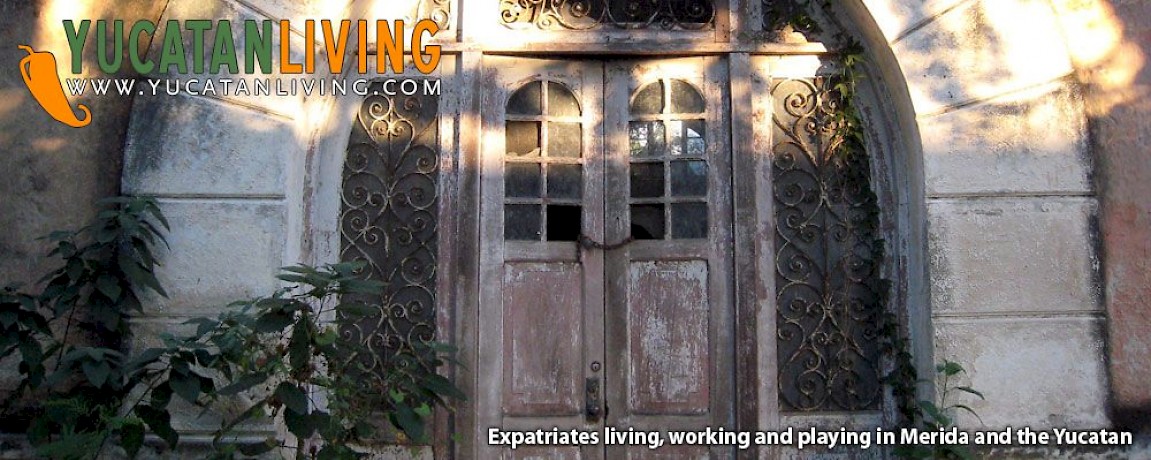


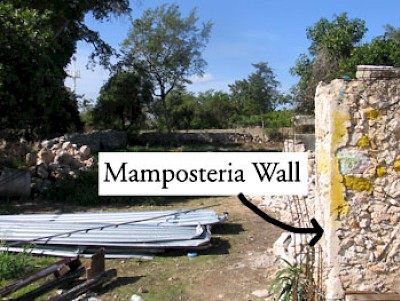
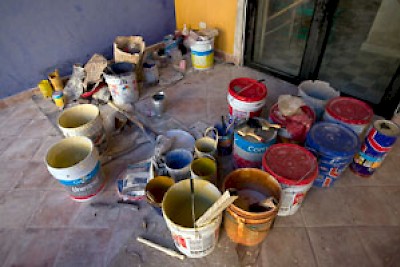
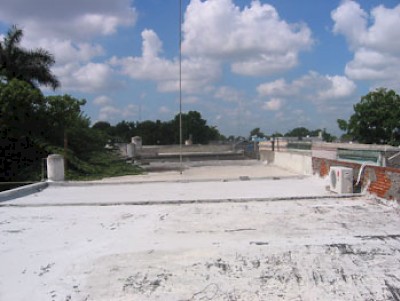
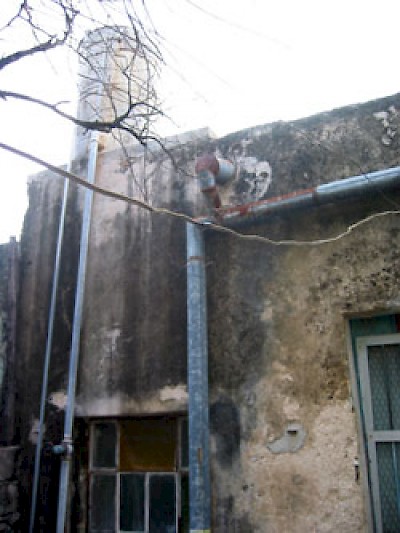

Comments
Laura Ferran-Algieri 17 years ago
I am planning to move to Merida and would like to hear any answers that come up about housing and anything else that could be of interest to someone like me.
Laura Ferran-Algieri
Love, Peace, Health and Prosperity,
always,
to you, me and everyone.
Putting it out to the universe......................
Reply
Mary Lou Martin 17 years ago
Thank you, thank you, thank you! We'll be in touch Jorge to have you look over the house we bought.
I’m wondering how to combat bugs. Can you get Raid or permethrin insecticides in Merida? Someone told me on a recent visit to Merida that the ants eat the computer innards, so is that preventable? And also that they eat the sheathing around the electrical wires - hence they hang loose outside the walls. Can a house be bug-proofed?
Can a house be made more airtight to keep the air conditioning in? I’ve been told a regular piano wouldn’t be practical because of the humidity, but I’d like to bring one down there. What's the most cost-effective air conditioner, and can it deal with Merida's humidity in the summer (we won't be there in the summer) ? I'm willing to keep all the doors and windows shut like we do here in Canada. Would the cost of electricity to run the air conditioning in at least one room non-stop be cost prohibitive?
We want to have some kitchen cabinets installed. What might the cost be to have them made in Merida, or can you give me some idea of the cost of putting in a kitchen like we're used to, (e.g. I have no idea of the cost of moisture and insect resistant wood)?
Are good carpentry services reasonably priced (I want to install built-in closets, shelving, etc.)
Are there upholsterers in Merida and what might the prices be?
Can you buy double glazed windows in Merida, and would it be worthwhile to install them on a wall that gets the afternoon sun? Also, could that one wall be insulated to reduce the amount of heat (and maybe humidity) generated?
Are gas ranges practical, re cost and availability of propane?
Hope I'm not monopolizing your time. Thanks again Gringos! Great site.
Reply
Ray 17 years ago
Great article as always.
Reply
July 17 years ago
Pls. notify when you get any replies.
Reply
« Back (100 to 104 comments)